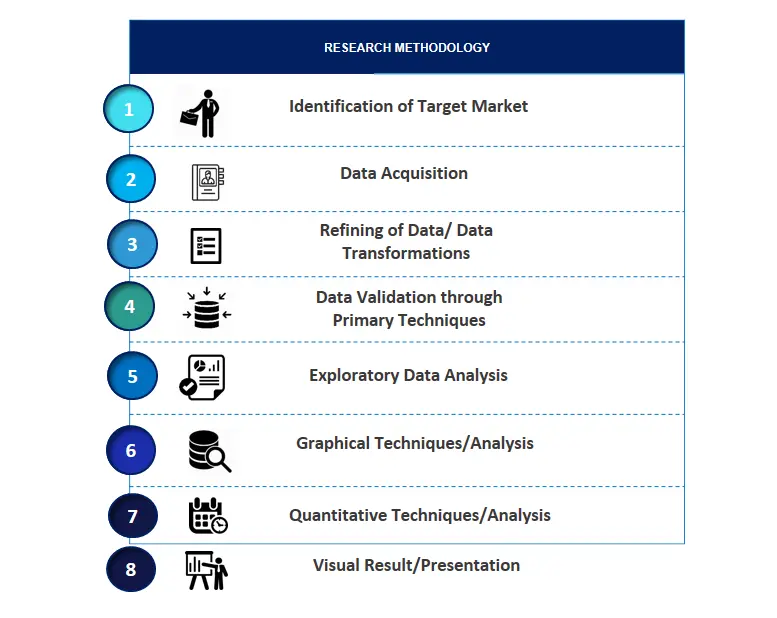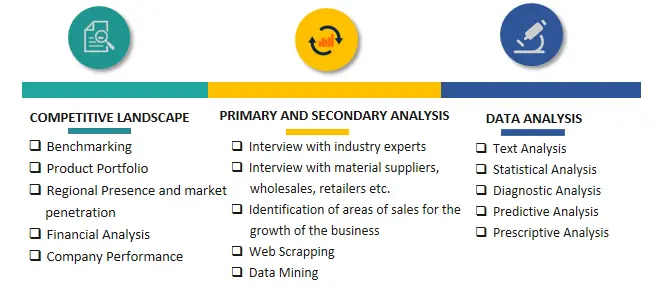
Telecom Analytics Market Growtrh, Size, Trends Analysis, Share, Challengs, Future Opportunities
Telecom Analytics Market Growth, Size, Trends Analysis- By Component, By Deployment Model, By Organization Size, By Application, -Regional Outlook, Competitive Strategies and Segment Forecast to 2034
| Published: Jan-2025 | Report ID: IACT2504 | Pages: 1 - 259 | Formats*: |
| Category : Information & Communications Technology | |||


- In January 2024, Databricks has launched the Data Intelligence Platform for Communications, a comprehensive data and AI platform for telecommunications carriers and network service providers. This platform gives CSPs a uniform basis for managing their AI and data, allowing them to fully understand their networks, operations, and customer interactions while protecting proprietary intellectual property and data privacy.
- In March 2023, IBM Corporation has announced plans to build and deploy intelligent automation software for Telecom Egypt's TE operations, with the goal of developing a unified solution that caters to all of its OSS spanning mobile, fixed, and core networks.
- In February 2023, Google Cloud partnered with Ericsson to help telecom operators enhance network performance and customer experience. In this case, Google Cloud will use analytics and machine learning skills to help Ericsson customers examine their network data.
| Report Metric | Details |
| Market size available for years | 2021-2034 |
| Base year considered | 2024 |
| Forecast period | 2025-2034 |
| Segments covered | By Component, By Deployment Model, By Organization Size, By Application. |
| Regions covered | North America, Latin America, Asia-Pacific, Europe, and Middle East & Africa. |
| Companies Covered | Adobe Inc, Alteryx, Cisco Systems, Inc, SAP SE, Hewlett Packard Enterprise Development LP, Huawei Technologies Co., Ltd, IBM, Microsoft, Micro Strategy Incorporated, Oracle. |
- Global Telecom Analytics Market Size (FY’2021-FY’2034)
- Overview of Global Telecom Analytics Market
- Segmentation of Global Telecom Analytics Market By Component (Solutions and Services)
- Segmentation of Global Telecom Analytics Market By Deployment Model (Cloud and On-Premise)
- Segmentation of Global Telecom Analytics Market By Organization Size (Small and Mid-Sized Enterprises, Large Enterprises)
- Segmentation of Global Telecom Analytics Market By Application (Customer Management, Sales and Marketing Management, Network Management, Risk and Compliance Management, Workforce Management, Others)
- Statistical Snap of Global Telecom Analytics Market
- Expansion Analysis of Global Telecom Analytics Market
- Problems and Obstacles in Global Telecom Analytics Market
- Competitive Landscape in the Global Telecom Analytics Market
- Details on Current Investment in Global Telecom Analytics Market
- Competitive Analysis of Global Telecom Analytics Market
- Prominent Players in the Global Telecom Analytics Market
- SWOT Analysis of Global Telecom Analytics Market
- Global Telecom Analytics Market Future Outlook and Projections (FY’2025-FY’2034)
- Recommendations from Analyst
1.1. Scope of the report1.2. Market segment analysis
2.1. Research data source
2.1.1. Secondary Data2.1.2. Primary Data2.1.3. SPERs internal database2.1.4. Premium insight from KOLs
2.2. Market size estimation
2.2.1. Top-down and Bottom-up approach
2.3. Data triangulation
4.1. Driver, Restraint, Opportunity and Challenges analysis
4.1.1. Drivers4.1.2. Restraints4.1.3. Opportunities4.1.4. Challenges
5.1. SWOT Analysis
5.1.1. Strengths5.1.2. Weaknesses5.1.3. Opportunities5.1.4. Threats
5.2. PESTEL Analysis
5.2.1. Political Landscape5.2.2. Economic Landscape5.2.3. Social Landscape5.2.4. Technological Landscape5.2.5. Environmental Landscape5.2.6. Legal Landscape
5.3. PORTERs Five Forces
5.3.1. Bargaining power of suppliers5.3.2. Bargaining power of buyers5.3.3. Threat of Substitute5.3.4. Threat of new entrant5.3.5. Competitive rivalry
5.4. Heat Map Analysis
6.1. Global Telecom Analytics Market Manufacturing Base Distribution, Sales Area, Product Type6.2. Mergers & Acquisitions, Partnerships, Product Launch, and Collaboration in Global Telecom Analytics Market
7.1. Solutions
7.1.1. Network Analytics7.1.2. Customer Analytics7.1.3. Subscriber Analytics7.1.4. Location Analytics7.1.5. Price Analytics7.1.6. Service Analytics7.1.7. Others
7.2. Services
8.1. Cloud8.2. On-Premise
9.1. Small and Mid-Sized Enterprises9.2. Large Enterprises
10.1. Customer Management10.2. Sales and Marketing Management10.3. Network Management10.4. Risk and Compliance Management10.5. Workforce Management10.6. Others
11.1. Global Telecom Analytics Market Size and Market Share
12.1. Asia-Pacific
12.1.1. Australia12.1.2. China12.1.3. India12.1.4. Japan12.1.5. South Korea12.1.6. Rest of Asia-Pacific
12.2. Europe
12.2.1. France12.2.2. Germany12.2.3. Italy12.2.4. Spain12.2.5. United Kingdom12.2.6. Rest of Europe
12.3. Middle East and Africa
12.3.1. Kingdom of Saudi Arabia12.3.2. United Arab Emirates12.3.3. Qatar12.3.4. South Africa12.3.5. Egypt12.3.6. Morocco12.3.7. Nigeria12.3.8. Rest of Middle-East and Africa
12.4. North America
12.4.1. Canada12.4.2. Mexico12.4.3. United States
12.5. Latin America
12.5.1. Argentina12.5.2. Brazil12.5.3. Rest of Latin America
13.1. Adobe Inc
13.1.1. Company details13.1.2. Financial outlook13.1.3. Product summary13.1.4. Recent developments
13.2. Alteryx
13.2.1. Company details13.2.2. Financial outlook13.2.3. Product summary13.2.4. Recent developments
13.3. Cisco Systems, Inc
13.3.1. Company details13.3.2. Financial outlook13.3.3. Product summary13.3.4. Recent developments
13.4. SAP SE
13.4.1. Company details13.4.2. Financial outlook13.4.3. Product summary13.4.4. Recent developments
13.5. Hewlett Packard Enterprise Development LP
13.5.1. Company details13.5.2. Financial outlook13.5.3. Product summary13.5.4. Recent developments
13.6. Huawei Technologies Co., Ltd
13.6.1. Company details13.6.2. Financial outlook13.6.3. Product summary13.6.4. Recent developments
13.7. IBM
13.7.1. Company details13.7.2. Financial outlook13.7.3. Product summary13.7.4. Recent developments
13.8. Microsoft
13.8.1. Company details13.8.2. Financial outlook13.8.3. Product summary13.8.4. Recent developments
13.9. MicroStrategy Incorporated
13.9.1. Company details13.9.2. Financial outlook13.9.3. Product summary13.9.4. Recent developments
13.10. Oracle
13.10.1. Company details13.10.2. Financial outlook13.10.3. Product summary13.10.4. Recent developments
13.11. Others
SPER Market Research’s methodology uses great emphasis on primary research to ensure that the market intelligence insights are up to date, reliable and accurate. Primary interviews are done with players involved in each phase of a supply chain to analyze the market forecasting. The secondary research method is used to help you fully understand how the future markets and the spending patterns look likes.
The report is based on in-depth qualitative and quantitative analysis of the Product Market. The quantitative analysis involves the application of various projection and sampling techniques. The qualitative analysis involves primary interviews, surveys, and vendor briefings. The data gathered as a result of these processes are validated through experts opinion. Our research methodology entails an ideal mixture of primary and secondary initiatives.



Frequently Asked Questions About This Report
PLACE AN ORDER
Year End Discount
Sample Report
Pre-Purchase Inquiry
NEED CUSTOMIZATION?
Request CustomizationCALL OR EMAIL US
100% Secure Payment






Related Reports
Our Global Clients
Our data-driven insights have influenced the strategy of 200+ reputed companies across the globe.




















